Best
BARITONE UKE STRINGS
-
Overall: Mellow, warm, and punchy strings for your baritone ukuleles
-
Best Feature: Made from D'Addario's proprietary Nyltech synthetic polymer
-
TedScore™: 9/10
Best
OVERALL BARITONE
UKE
-
Overall: Natural finish with a mahogany neck and body
-
Best Feature: With 18 Silver-nickel Frets and Walnut fingerboard and bridge
-
TedScore™: 9.5/10
Best
BARITONE UKE TUNER
-
Overall: Ensure Your Tuning Is Always Spot On With Snark's High-Accuracy Design
-
Best Feature: Specifically Designed For Ukulele With A 360-Degree Rotatable Display
-
TedScore™: 9/10
Baritone ukulele tuning sets the stage for your instrument to sing in its rich, deep voice, distinct from its soprano, concert, and tenor ukulele cousins.
Since you’re embarking on the baritone ukulele adventure, getting the tuning right is crucial for playing any song accurately.
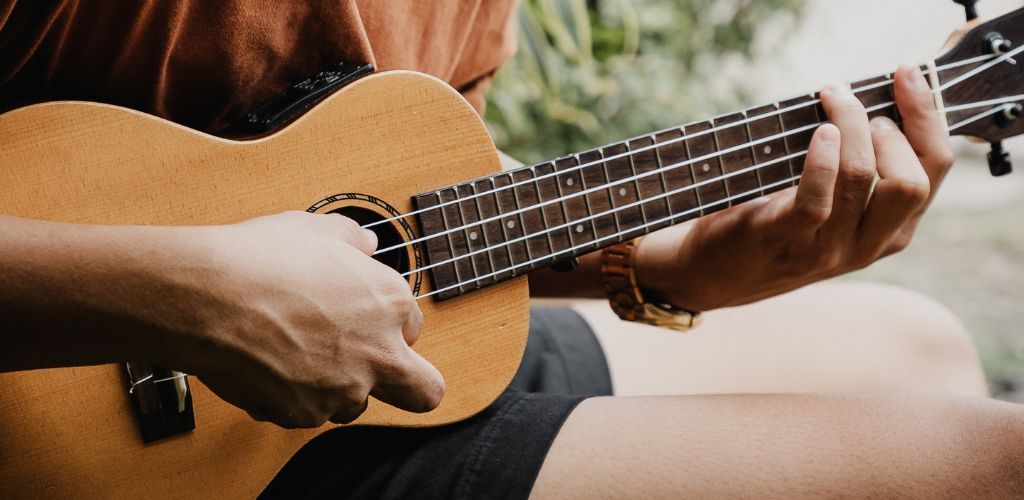
Remember, consistent tuning improves your sound and helps you develop a better ear for music, enhancing your overall playing experience.
The baritone ukulele’s tuning is similar to the bottom four strings of a guitar’s standard tuning, making it easier for guitar players to transition.
But knowing how to tune a baritone uke can be mind-boggling. You have four nylon strings in front of you, and knowing the precise note to tune each string is not easy.
Understanding the
Baritone Ukulele
Basics of the Instrument
The baritone ukulele is a unique gem in the ukulele family, standing out with its larger size and deeper, richer sound.
If you’re familiar with the classical guitar, you’ll find the baritone uke’s tuning quite similar, as it uses the same D-G-B-E standard tuning as the top four strings of a guitar.
This makes it an excellent choice for beginners, especially those transitioning from guitar to ukulele.
With its four strings, the baritone ukulele offers a comfortable and familiar feel, making it easier to pick up and play.
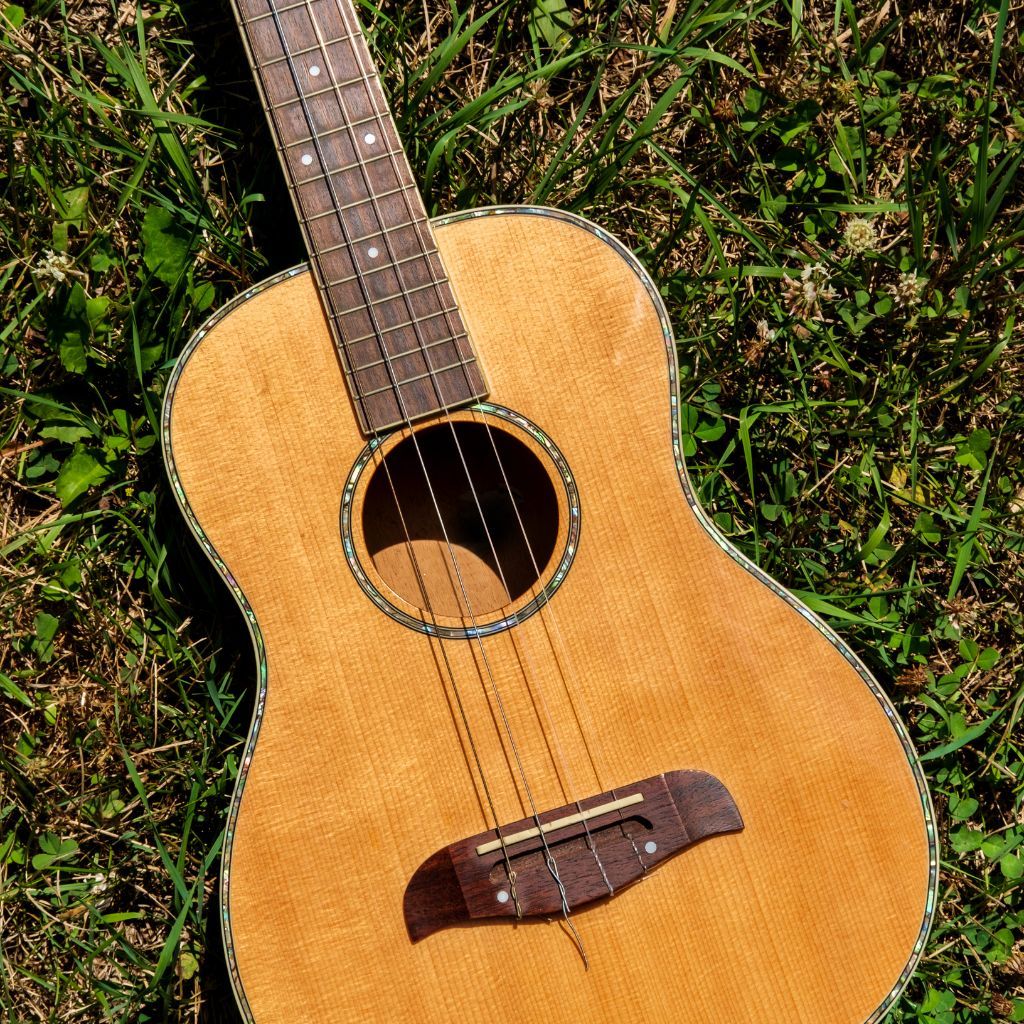
Unique Features and Benefits
One of the standout features of the baritone ukulele is its ability to produce a strong, resonant sound that still retains the light, playful character of the ukulele family. This makes it perfect for players looking to explore new sonic territories.
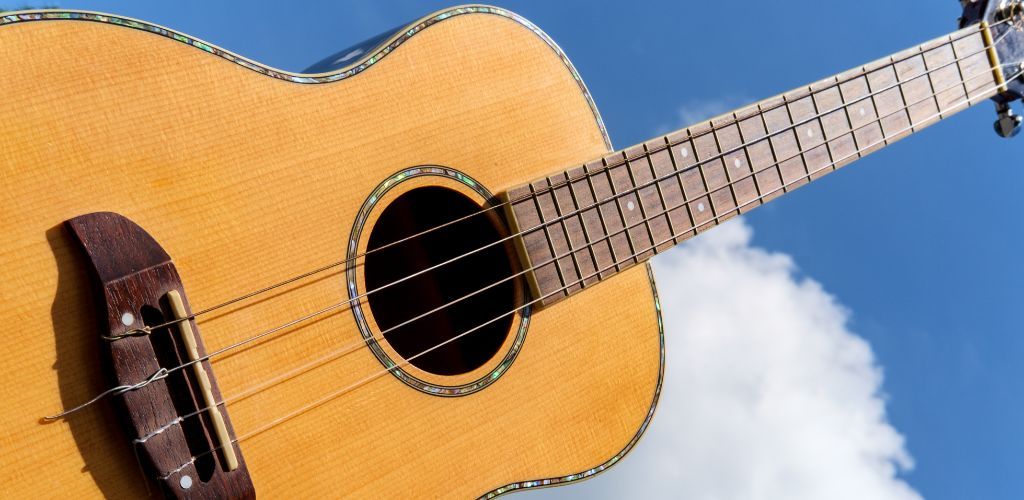
The baritone uke’s longer scale length provides more room for finger placement, allowing for greater flexibility and a wider range of chord options.
Unlike other ukulele sizes, the baritone uses a non-reentrant tuning, meaning the strings are tuned from low to high, which adds to its unique tonal quality.
Basics of
Baritone Ukulele Tuning
The baritone ukulele’s longer scale and standard tuning of D-G-B-E mean those melodious chords resonate beautifully in a lower pitch.
Think of it as the bass version in the ukulele family, offering a warm embrace to the ukulele sound you love.
Now, let’s explore the standard tuning and some fun alternatives you might want to try.
Understanding Standard Tuning: DGBE

Your baritone uke differs from its smaller siblings; it uses the DGBE tuning, which matches the bottom four strings of a full guitar’s standard tuning.
This setup gives it a deeper, warmer sound that’s quite distinctive.
- 4th string to D
- 3rd string to G
- 2nd string to B
- 1st string to E
It’s a linear tuning, meaning the notes run from low to high, providing a rich tonal range for your melodies and chords.
Alternative Tunings and Their Uses
Thinking of being adventurous?
Then, you might enjoy experimenting with alternative tunings, such as the “GCEA” tuning used by concert and tenor ukuleles.
Tuning your baritone uke to G C E A, you can bring it closer to the sound of its smaller relatives, opening up a whole new sonic palette.

Another interesting option is high D tuning, which is connected to re-entrant tunings and offers a distinct sound, particularly in jazz music. This tuning is favored by notable musicians for its unique, resonant sound.
This type of alternate tuning can either be re-entrant (this just means that the strings are not tuned from lowest to highest) or linear, depending on whether the G string is tuned high or low. Re-entrant tuning aligns the baritone with the standard tuning of other ukuleles.
Each tuning brings its flavor and possibilities to your music. Exploring these can add versatility to your playing and make familiar songs sound brand new!
Tuning Methods and Tools
Getting your baritones perfectly in tune is crucial for that sweet, rich sound. Luckily, there’s more than one way to tune a uke!
Electronic Tuners and Apps
An electronic tuner is your best pal when you need to be pitch-perfect fast.
Just clip it onto your headstock, turn it on, and pluck each open string. The tuner’s display will tell you if each string is too low or too high. Then, you’ll adjust the corresponding tuning peg until the display shows the note is right.
Also, your smartphone is a treasure trove if you’re all about smart tech.
With a tuning app available for Android and iOS, you have a handy guitar tuner in your pocket. Download one of the many tuning instruments and apps, and you’re ready to uke!
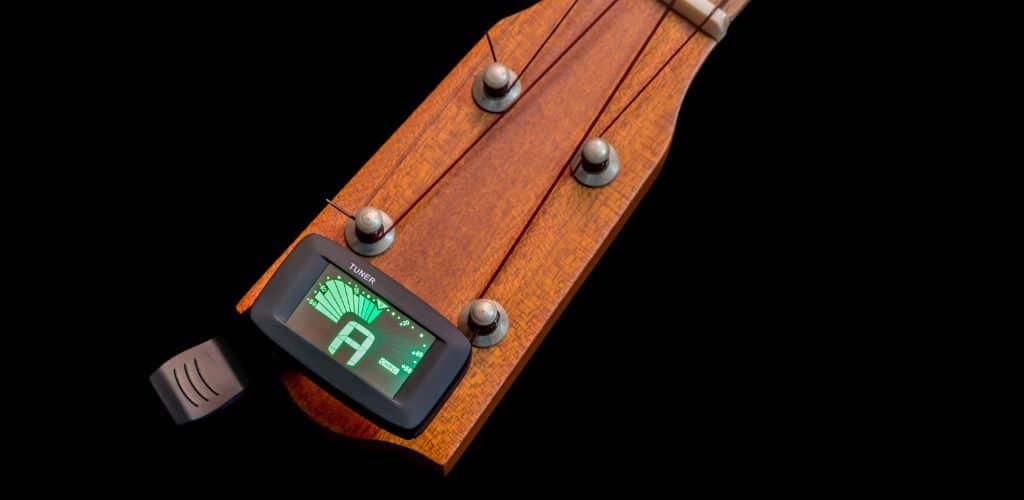
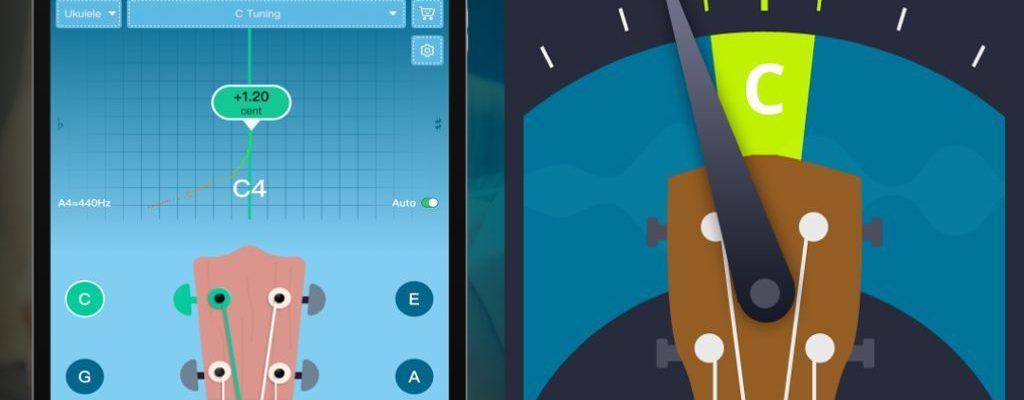
Tuning by Ear: The Traditional Way
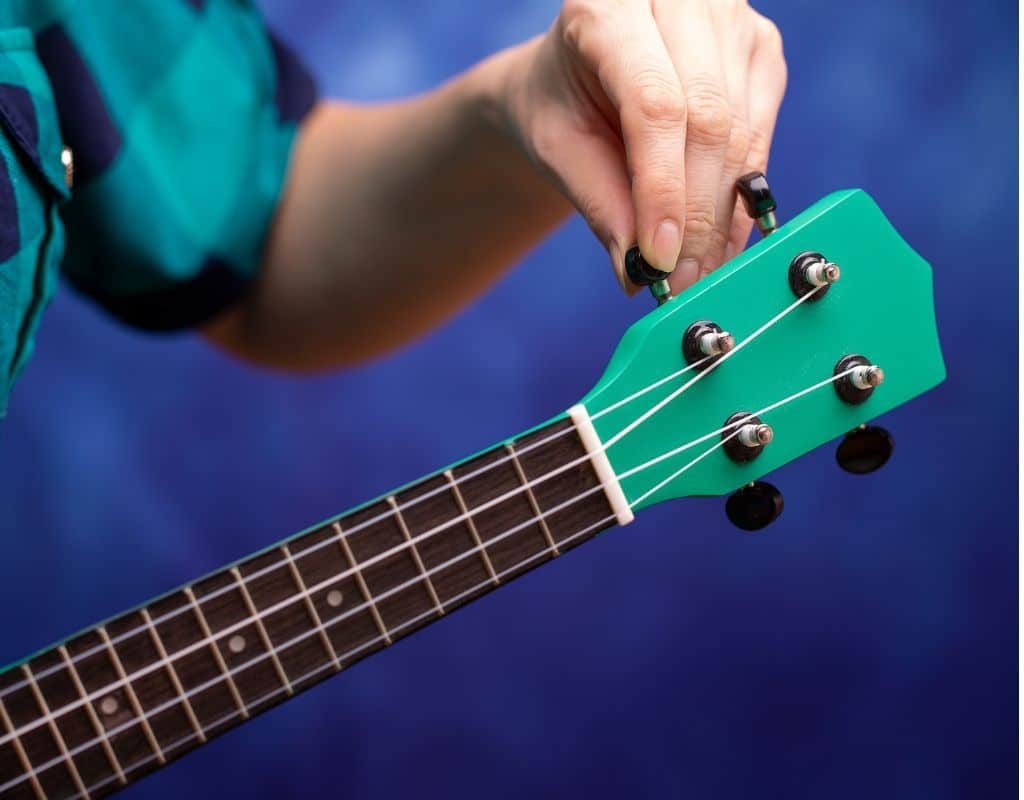
Tuning by ear can be a fun challenge!
Start by listening to a standard pitch from a piano, pitch pipe, or another ukulele. Then, try to match the pitch of the d string to your baritone uke’s strings by ear.
It’s an amazing way to improve your musical ear and gain a deeper understanding of your instrument.
Sure, it takes practice, but learning to tune your ukulele by ear will help you become more attuned to its subtleties.
Best Baritone Uke and Accessories
As a professional, I’d like to share with you the best baritone uke and accessories that I think are important for a ukulele player!
I’m thoroughly impressed with the Kala KA-BE Baritone Ukulele’s warm, rich tones and the built-in electronics that make amplification a breeze for live performances.
The satin mahogany finish looks beautiful and contributes to the instrument’s resonant sound, making it a joy to play acoustically and plugged in.
Kala KA-BE Baritone Ukulele - Satin Mahogany
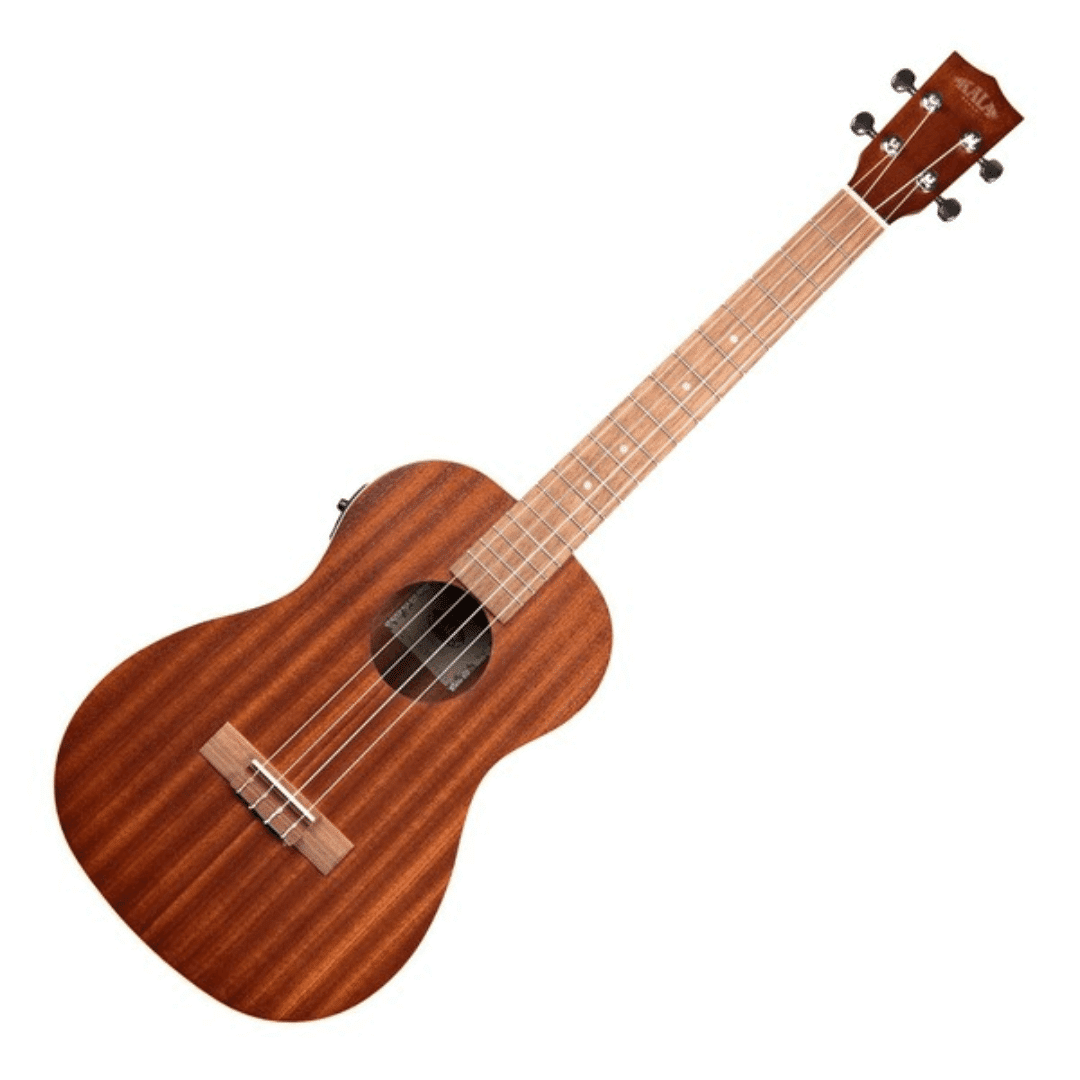
FEATURES: Natural finish with a mahogany neck and body
OTHER INFO: With 18 Silver-nickel Frets and Walnut fingerboard and bridge
- Has Chrome Die-cast Sealed Geared Tuners
- Comes with Aquila Nylgut Premium Strings and a built-in tuner
- There are no cons to this one!
When you click ‘Check Price’, you’ll see there are loads of great places to buy this item. Our personal favorite is Sweetwater for the US, and Thomann and Gear4Music for the UK & Europe.
They are the largest music retailers, with excellent customer service, competitive prices, really fast shipping, and the longest guarantees.
The professional musician who wrote this article combined many things,
from the product build, manufacturer’s reputation through to feedback
from other users, to create our famous TedScore™.

I’ve found the D’Addario EJ88B Nyltech Natural Nylon Baritone Ukulele Strings deliver a balanced, warm tone that complements my ukulele’s natural sound beautifully.
Their smooth texture and comfortable tension make playing for extended periods pleasurable, enhancing my practice and performance experiences.
D'Addario EJ88B Nyltech Natural Nylon Baritone Ukulele Strings
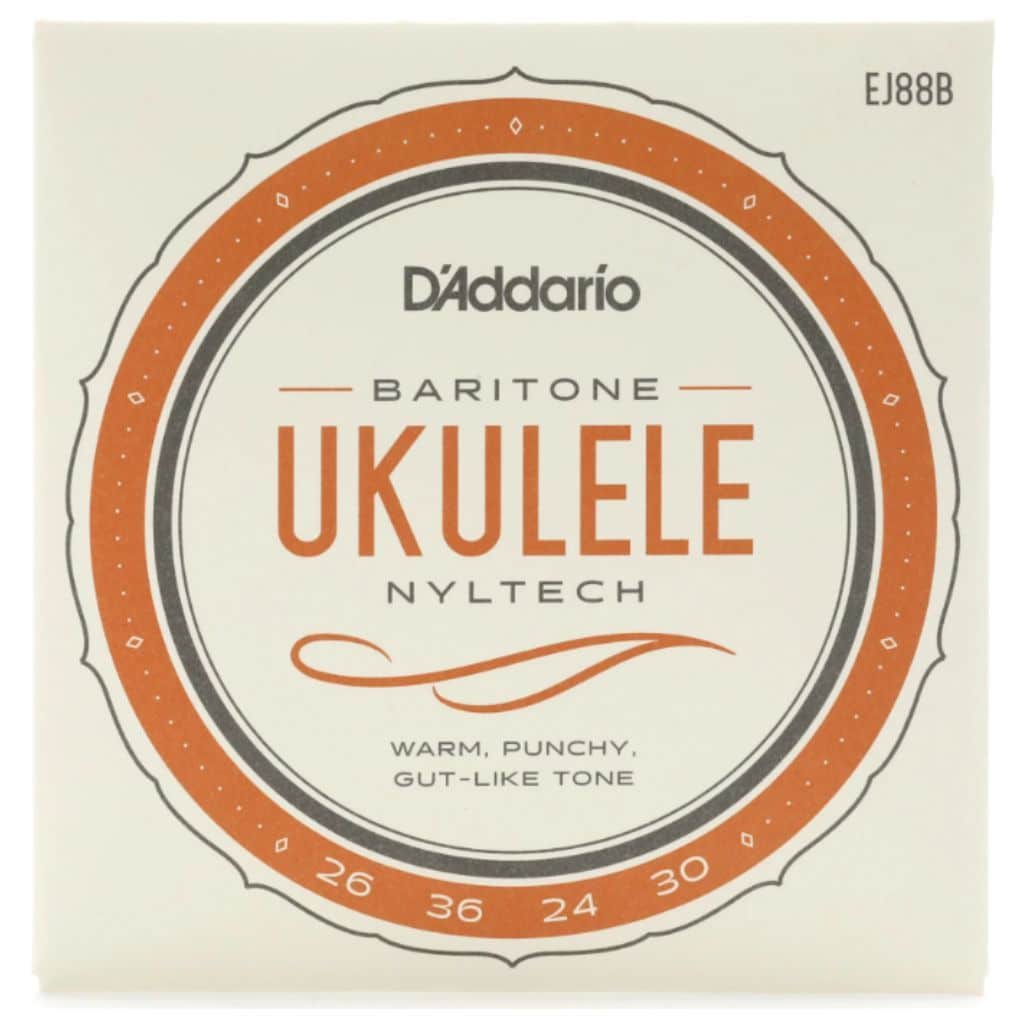
FEATURES: Mellow, warm, and punchy strings for your baritone ukuleles
OTHER INFO: Made from D'Addario's proprietary Nyltech synthetic polymer
- Combines smooth feel with exceptional tonal warmth
- No Cons!
When you click ‘Check Price’, you’ll see there are loads of great places to buy this item. Our personal favorite is Sweetwater for the US, and Thomann and Gear4Music for the UK & Europe.
They are the largest music retailers, with excellent customer service, competitive prices, really fast shipping, and the longest guarantees.
The professional musician who wrote this article combined many things,
from the product build, manufacturer’s reputation through to feedback
from other users, to create our famous TedScore™.

The Snark SN6 Clip-On Ukulele Tuner has been a game-changer for me. Its easy-to-read, bright display offers quick and accurate tuning.
Its compact design and swivel head make it incredibly convenient to use at any angle. It ensures my ukulele is always in perfect tune before I play.
Snark SN6 Clip-On Ukulele Tuner

PERFECT FOR: beginner to pro musicians
FEATURES: Ensure your tuning is always spot on with Snark's high-accuracy design
OTHER INFO: Specifically designed for ukulele with a 360-degree rotatable display
- Fully chromatic with an upgraded chip for precision pitch every time
- Lightweight, durable design with a reliable grip clip that stays put for quick, efficient tuning
- Comes with a built-in metronome
- The battery life lacks longevity
When you click ‘Check Price’, you’ll see there are loads of great places to buy this item. Our personal favorite is Sweetwater for the US, and Thomann and Gear4Music for the UK & Europe.
They are the largest music retailers, with excellent customer service, competitive prices, really fast shipping, and the longest guarantees.
The professional musician who wrote this article combined many things,
from the product build, manufacturer’s reputation through to feedback
from other users, to create our famous TedScore™.
Baritone Ukulele Tuning:
Final Words!
Tuning your baritone ukulele is a breeze once you get the hang of it!
Generally, you’ll set those open strings to D-G-B-E. That’s right, just like the top four strings of a classical guitar. Feel the ease as your baritone uke’s rich, deep tones come to life.
Are you having trouble remembering the order?
Think of the acronym Dog-Gone-Best-Ever.
- 1st string = E note
- 2nd string = B note
- 3rd string = G note
- 4th string = D note
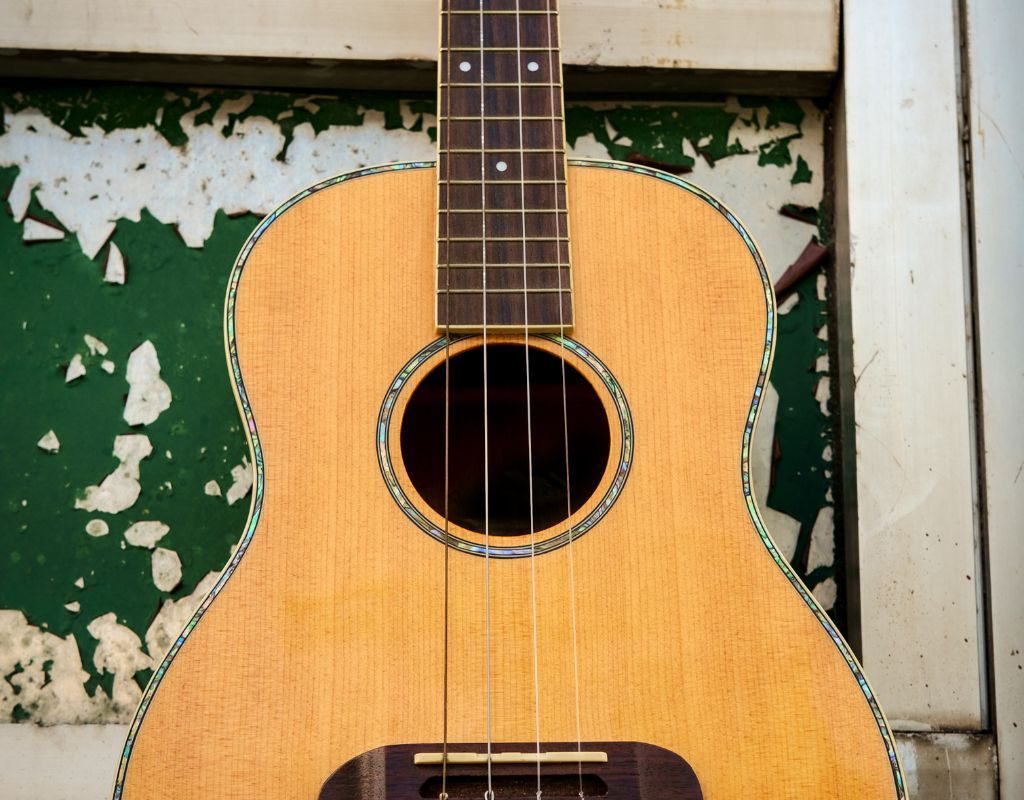
Also, a clip-on tuner can be your best pal for accuracy. You’ll taste the sweet sound of perfect harmony once all four are in tune!
If you’re ever unsure, check against a piano or digital tuner. They’re like a compass guiding you through the soundscape.
And that’s it!
You’re well on your way to serenading the night away. Keep strumming, and let your baritone ukulele sing!
Oh, and before you go…
If you want to know what type to choose from the ukulele family, this next article is for you. It’ll give you information about the best ukulele sizes and brands!
FAQ's
The baritone ukulele is tuned differently than the tenor ukulele, typically to DGBE, to accommodate its larger size and to align more closely with the deeper tonal range and lower tuning of a guitar’s top four strings. This tuning corresponds directly to the bottom four strings of a guitar’s standard tuning (EADGBE), making it easier for guitar players to transition to playing the baritone ukulele due to the familiar chord shapes and riffs.
Yes, you can tune your baritone ukulele string to GCEA, but you may need to use specific strings designed for that tuning to maintain proper tension and sound quality.
The standard tuning for a baritone ukulele is DGBE, with the D being the lowest pitch and E the highest.
Yes, the baritone ukulele is tuned to the same octave as the highest four guitar strings.












